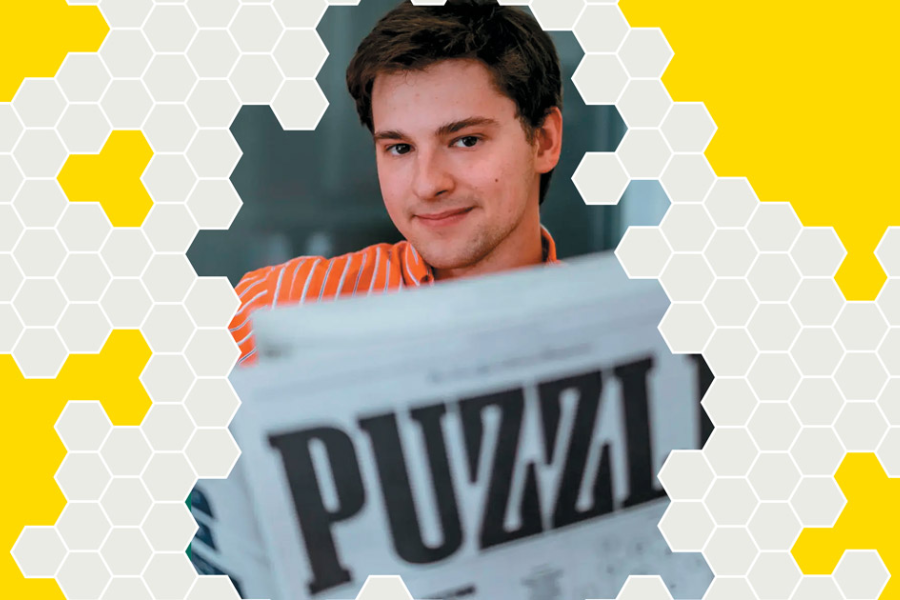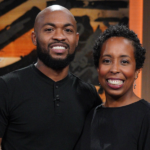Sam Ezersky is a notable figure in the world of puzzles, particularly crossword puzzles. Known for his creative approach and innovative contributions, Ezersky’s career has influenced the way millions engage with word games. From his humble beginnings to his current role as a pivotal player at The New York Times, his journey offers valuable insights into the world of puzzles and their cultural significance.
Early Fascination with Puzzles
Ezersky’s story begins at a very young age. As a child, he developed a fascination with puzzles that would last throughout his life. His earliest encounter with puzzles occurred at just five years old while waiting in a barbershop. He stumbled upon a fill-it-in puzzle, which is similar to a crossword but uses a word bank instead of clues. This moment sparked a lifelong interest in the mechanics of puzzles and how words could fit together in various configurations
Over the years, Ezersky’s interest in puzzles deepened, expanding from simple puzzle-solving to puzzle-creation. As a teenager, he started making his own crosswords. His first significant achievement in the puzzle world came in high school when he sold his first crossword puzzle to The New York Times This early success motivated him to continue pursuing his passion for puzzles, even as he navigated other academic interests.
Wiki
| Attribute | Details |
| Full Name | Sam Ezersky |
| Birthplace | United States |
| Known For | Crossword puzzle editor at The New York Times |
| Profession | Puzzle editor, puzzle creator, crossword enthusiast |
| Notable Contributions | Revitalizing The New York Times Spelling Bee game, editing and curating crossword puzzles |
| Education | University of Virginia |
| Career | Crosswords editor at The New York Times since 2017 |
| Career Highlights | Contributing to the digital success of Spelling Bee, revolutionizing puzzle design with focus on accessibility |
| Years Active | 2017–present |
| Awards | Recognition within the puzzle community, though specific awards are not widely noted |
| Social Media/Website | The New York Times Puzzles |
The College Years and Shift in Career Path
Ezersky enrolled at the University of Virginia, where he initially pursued studies in mechanical engineering and economics. Despite his academic focus, he continued to nurture his passion for puzzles. He began creating crosswords for the student-run newspaper, The Cavalier Daily, and these puzzles quickly gained popularity. This local fame on campus even led to his work being discussed on the anonymous social media app Yik Yak
However, Ezersky’s true career path would take a significant turn during his college years. Initially, he had planned to pursue a career in engineering, but a chance encounter changed everything. After reconnecting with Will Shortz, the famed crossword editor at The New York Times, Ezersky found himself reconsidering his future. The two had met before at a crossword tournament, and Ezersky took a leap of faith by emailing Shortz to reconnect
Shortz, a mentor and idol to Ezersky, responded positively, and the two spent hours discussing puzzles. This conversation proved to be a turning point for Ezersky, leading him to pursue a full-time career in puzzles rather than engineering. In 2017, shortly after graduating, Ezersky secured a position as a crossword editor at The New York Times, marking the beginning of his professional career in the puzzle industry
Revolutionizing the Spelling Bee
In 2018, Ezersky became heavily involved in a project that would bring him even more recognition: the digital reboot of The New York Times’ Spelling Bee. Originally a printed word game in the magazine, Spelling Bee had gained a cult following over the years. Ezersky’s role in revitalizing the game involved transforming it into a digital format that could reach a broader audience and engage readers in new ways.
Under his guidance, the Spelling Bee game saw an increase in its popularity, especially during the COVID-19 pandemic when many people turned to word games for entertainment and mental stimulation. Ezersky’s focus on making the game accessible, challenging, and enjoyable for all skill levels contributed to its success The game became a daily fixture for many readers, with fans eagerly anticipating the new puzzle each day.
Ezersky’s involvement with Spelling Bee is part of a larger trend where puzzles are no longer confined to a niche audience. Instead, they have become mainstream, with millions engaging in crossword puzzles, word searches, and other similar games across platforms like The New York Times, mobile apps, and social media
Puzzle Philosophy: Accessibility and Engagement
Ezersky’s approach to puzzles goes beyond the mechanics of solving them. He believes in making puzzles that cater to a broad audience, from novices to experts. One of his core beliefs is that solving puzzles is more about recognizing patterns than about possessing vast amounts of trivia knowledge. This focus on pattern recognition helps to democratize puzzles, making them more accessible to people of all backgrounds
In line with this philosophy, Ezersky also advocates for diversity in puzzle creation. He recognizes that puzzles are a form of media that can reflect the broader cultural landscape. As such, he is a strong proponent of ensuring that puzzle creators come from diverse backgrounds to ensure that the puzzles they create resonate with a wide variety of audiences
His efforts have made an impact not only in the world of puzzles but also in the way we think about games and media. By making puzzles more inclusive, Ezersky has contributed to a larger cultural shift where intellectual entertainment is no longer seen as exclusive or elite but as something that anyone can enjoy and benefit from.
Puzzle Competitions and Legacy
Before becoming a full-time editor at The New York Times, Ezersky had already made a name for himself in the competitive crossword puzzle scene. He competed in the American Crossword Puzzle Tournament, a prestigious event that draws solvers from all over the world. Through this experience, he honed his skills, not only as a solver but also as a creator. His competitive background has given him a unique perspective on what makes a great puzzle—balancing difficulty, creativity, and accessibility
This competitive spirit and deep understanding of puzzles have also shaped his editorial decisions at The New York Times. Ezersky’s influence has helped elevate the newspaper’s puzzle offerings, making them more engaging and inclusive while still maintaining the intellectual rigor that the brand is known for His ongoing contributions to puzzle culture highlight his dedication to improving the puzzle experience for readers worldwide. From his work on Spelling Bee to his crosswords, Ezersky continues to push the boundaries of what puzzles can be and how they can influence modern media.
The Cultural Impact of Puzzles
Puzzles, particularly crosswords, have long been a staple of daily life for many people. Whether as a quick mental break during lunch or a full-fledged daily routine, puzzles provide a source of entertainment and intellectual stimulation. However, in recent years, puzzles have seen a surge in popularity, thanks in part to digital platforms and the efforts of people like Ezersky.
One of the most significant factors driving this popularity is the accessibility of puzzles. Digital platforms have made puzzles available on a variety of devices, allowing users to engage with them whenever and wherever they choose. Furthermore, platforms like The New York Times have introduced features that make puzzles more interactive, allowing users to track their progress and compare their performance with others
The pandemic also played a significant role in the increased popularity of puzzles. As many people were confined to their homes during lockdowns, word games and puzzles became a form of entertainment, a way to pass the time, and even a form of mental exercise. For many, engaging with puzzles became a daily ritual, helping to maintain mental sharpness and provide a sense of normalcy during uncertain times
Ezersky’s work has played a significant role in this shift, making puzzles not just a niche activity but a mainstream cultural phenomenon. By embracing technology and fostering inclusivity in puzzle design, Ezersky has helped to create a puzzle culture that resonates with people from all walks of life. As his influence continues to grow, it is clear that his contributions will have a lasting impact on the world of puzzles.
Conclusion
Sam Ezersky’s career in the world of puzzles is a testament to the power of passion and persistence. From his childhood fascination with fill-it-in puzzles to becoming a leading crossword editor at The New York Times, Ezersky has not only shaped the future of puzzles but also influenced the way millions of people engage with them. His approach, emphasizing accessibility and inclusivity, has helped redefine puzzles as both a source of entertainment and intellectual stimulation for people of all ages and backgrounds.
Through his work on Spelling Bee and crosswords, Ezersky has demonstrated that puzzles are not just about solving tricky clues; they are a tool for bringing people together, sparking creativity, and engaging minds in ways that extend beyond traditional games. His contributions to the puzzle world have helped elevate puzzles into the mainstream, making them more than just a pastime but a cultural phenomenon. As puzzles continue to evolve, Sam Ezersky’s influence will undoubtedly leave a lasting legacy.
FAQs
1. Who is Sam Ezersky?
Sam Ezersky is a renowned puzzle editor and creator, best known for his work at The New York Times, where he played a significant role in popularizing the Spelling Bee game and revolutionizing crossword puzzles. He is celebrated for his innovative approach to puzzles and his commitment to making them accessible and enjoyable for a wide range of audiences.
2. What is Sam Ezersky’s role at The New York Times?
Sam Ezersky is a crossword editor at The New York Times. He has been instrumental in shaping the newspaper’s puzzle offerings, including his work on the Spelling Bee game, which he helped transition into a highly successful digital format.
3. How did Sam Ezersky get started in puzzles?
Ezersky developed a passion for puzzles at a young age, starting with fill-it-in puzzles when he was five years old. He began creating his own crosswords as a teenager and sold his first puzzle to The New York Times in high school. This marked the beginning of his professional career in puzzles.
4. What is the Spelling Bee game, and how did Sam Ezersky contribute to it?
The Spelling Bee is a word game offered by The New York Times, where players form words using a set of seven letters. Sam Ezersky played a key role in revitalizing the game, transitioning it into a digital format and making it accessible to a larger audience. His work helped turn Spelling Bee into a cultural sensation, particularly during the COVID-19 pandemic.
5. What makes Sam Ezersky’s approach to puzzles unique?
Ezersky believes in creating puzzles that are accessible to people of all skill levels, focusing on pattern recognition rather than trivia knowledge. His emphasis on diversity in puzzle creation ensures that puzzles resonate with a broad range of audiences, making them inclusive and engaging for everyone.
6. Has Sam Ezersky won any awards for his work in puzzles?
While specific awards are not frequently highlighted in his career, Ezersky’s impact on the puzzle industry, particularly through his editorial work at The New York Times, has earned him recognition and respect within the puzzle community. His contributions have helped elevate the popularity of crossword puzzles and other word games in mainstream media.
Explore the latest news and updates on playhop THANK YOU!



